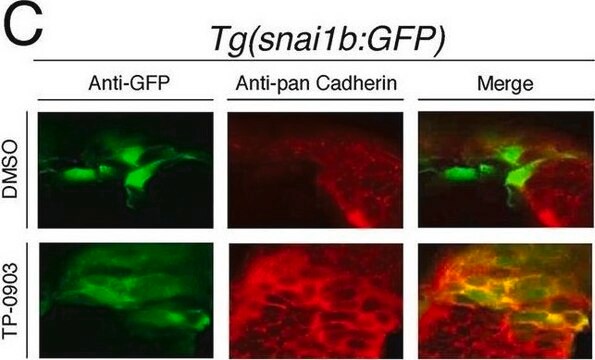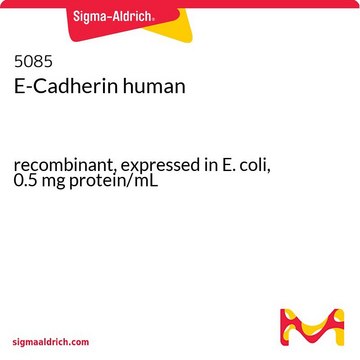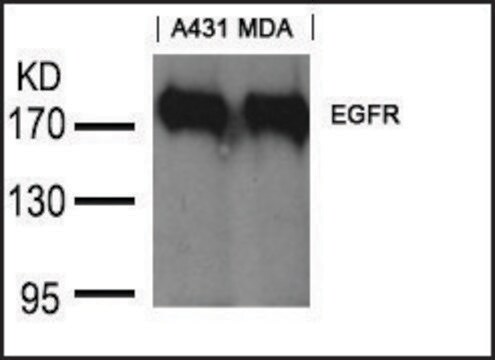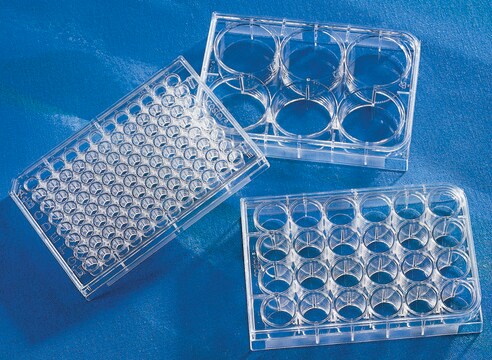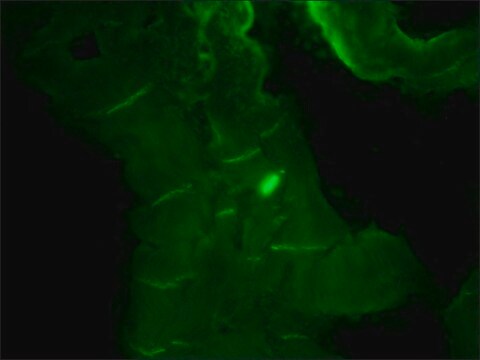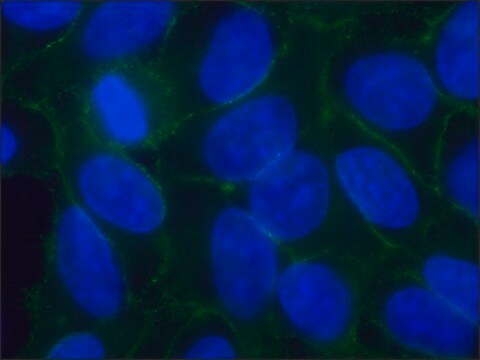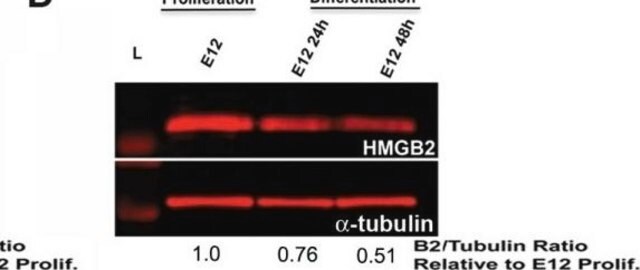E2153
E-Cadherin/Fc Chimera from mouse
>90% (SDS-PAGE), recombinant, expressed in NSO cells, lyophilized powder
Sinônimo(s):
L-CAM, Arc-1, Cell-CAM120/80, Epithelial cadherin, Uvomorulin
About This Item
Produtos recomendados
fonte biológica
mouse
Nível de qualidade
recombinante
expressed in NSO cells
esterilidade
sterile; sterile-filtered
Ensaio
>90% (SDS-PAGE)
Formulário
lyophilized powder
peso molecular
monomer calculated mol wt 88.2 kDa
~120 kDa by SDS-PAGE (reducing)
calculated mol wt 88.2 kDa
embalagem
pkg of 50 μg
técnica(s)
cell culture | mammalian: suitable
Impurezas
endotoxin, tested
nº de adesão UniProt
Condições de expedição
ambient
temperatura de armazenamento
−20°C
Informações sobre genes
mouse ... Cdh1(12550)
Descrição geral
Aplicação
Ações bioquímicas/fisiológicas
forma física
Código de classe de armazenamento
13 - Non Combustible Solids
Classe de risco de água (WGK)
WGK 3
Ponto de fulgor (°F)
Not applicable
Ponto de fulgor (°C)
Not applicable
Equipamento de proteção individual
Eyeshields, Gloves, type N95 (US)
Escolha uma das versões mais recentes:
Já possui este produto?
Encontre a documentação dos produtos que você adquiriu recentemente na biblioteca de documentos.
Nossa equipe de cientistas tem experiência em todas as áreas de pesquisa, incluindo Life Sciences, ciência de materiais, síntese química, cromatografia, química analítica e muitas outras.
Entre em contato com a assistência técnica